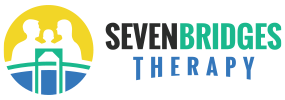Evaluations
SPEECH
If you have concerns about how your child pronounces certain words and/or how well others understand him, an articulation evaluation is in order to analyze his speech.
We evaluate children with a combination of formal, standardized testing tools and informal observations. Plus, we analyze a spontaneous speech sample where we listen to your child in conversation and gauge how well we understand him or her.
| Formal Assessments | Informal Observations | Apraxia Evaluations |
| Spontaneous Speech Analysis | Speech Sound Production Analysis | Overall Intelligibility Analysis |
We also conduct an extensive caregiver interview to get an idea of how well family, the people who see your child regularly, as well as strangers (like the cashier at Safeway) understand your child.
We specialize in Verbal Apraxia, a motor-planning speech disorder in which a child has difficulty coordinating his mouth movements and/or sequencing sounds to produce age-level sounds and sound combinations. We will include Apraxia evaluation tools whenever we observe red flags for Apraxia during our intake process or during the evaluation itself.
LANGUAGE
We evaluate how well your child understands language, commonly known as “comprehension,” by gauging how well he follows age-level directions, comprehends age-level questions, and understands age-level vocabulary. To do this, we perform formal tests as well as analyze how your child responds during natural language interactions.
| Language Comprehension | Language Expression |
We also evaluate how well your child expresses him or herself verbally and nonverbally. Verbal expression includes vocabulary, sentence length, grammar, and age-appropriate expression of thoughts and feelings. Nonverbal expression includes pointing, hand leading, grunting, crying, facial expressions, etc.
SOCIAL
We have experienced therapists on our team who will assess how well your child communicates socially. We evaluate how well your child regulates and communicates his emotions, uses perspective taking skills, how well he initiates and maintains conversations, and how well he perceives nonverbal and figurative communication.
Verbally:
| Initiating & Responding | Introducing & Sustaining Topics |
Concluding & Changing Topics |
Nonverbally:
| Gesturing | Facial Expressions | Proximity & Eye Gaze |
Reading Others’ Nonverbal Cues |
For Speech, Language, and Social development assistance with a focus on family outcomes, you can trust Seven Bridges Therapy. We are experienced therapists who treat our clients with compassion.


